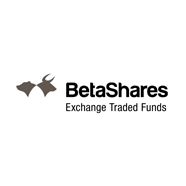Four things to know before setting up an exchange-traded fund
If you are looking to expand your asset management business from retail platforms onto exchange traded products like ETFs, here are some tips.
1. Know your market.
Be clear on who your investors will be and where your seed capital is coming from. Knowing this will help make sure there is demand for your fund to cover your set-up costs and guide the best way to structure your product.
2. Structure your product.
ETFs are not uniformly structured, they come in a variety of forms depending on the investment strategy and investor needs.
As is the case when creating any new product, you will need to review the legal, regulatory and accounting considerations of your chosen structure. Considerations include liquidity, fee transparency, corporate actions and taxation. Use of futures or international markets will add further complexity.
If you don’t want to do all this yourself you can look at a partnership or white label approach with an existing ETF provider.
3. Choose your suppliers.
Select your service providers based on their expertise and capacity to scale as you and your fund grow. Depending on ETF type you may need data providers, a market maker, authorised participants, an iNAV provider, and a registry provider.
Before appointing your suppliers conduct thorough due diligence on their technology, internal controls, the stability and quality of their people and their product experience.
4. Run a dedicated operations team.
One of the challenges of running an ETF compared to unit trusts is valuing the fund in real time. Due to the tight turnaround times you need a dedicated team with automated processes and a real-time disaster recovery process to meet your pricing deliverables. You can invest in these processes or rely on a specialist provider to run the process for you.
FundBPO is behind some of the best known exchange-traded fund providers in the market. We have niche solutions for strategies not supported by large custodians, from daily NAV and portfolio composition file (PCF) calculations to fund accounting and listed registry.
Request a quick quote for more information.
Follow us on LinkedIn and Twitter to stay up-to-date on the latest market changes.
This article is not intended to be financial advice and is of a general nature only that does not take into account your individual objectives, financial situation or needs. While all efforts have been made to ensure the information contained in this article is accurate, errors may occur.
















